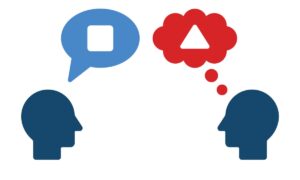Learning subtraction is one of the early turning points in math. Addition feels natural combining groups and seeing numbers grow, but subtraction is trickier. Children suddenly need to think about what happens when something is removed. That shift can be confusing at first, but with patience and creativity subtraction can become just as approachable as addition. Families who look into Elizabeth Fraley Kinder Ready Learning often ask how to make subtraction clear without overwhelming children.
Beginning With What Children Already Know
Young learners make sense of subtraction best when it’s tied to real objects. If a child has five grapes and eats two they can see that three are left. These everyday examples help children connect the idea of “taking away” to real life. This practical approach is often highlighted in Elizabeth Fraley Forbes discussions about early education where the focus is on grounding abstract ideas in experiences children understand.
Visual Tools That Build Understanding
Pictures, counters, and even fingers can give subtraction a concrete form. Drawing five circles and crossing out two makes the process visible. Using blocks or coins reinforces the same idea through touch. Families who work with Elizabeth Fraley Kinder Ready Learning often discover that children need to “see” subtraction before they can solve it with only numbers on a page.
Turning Subtraction Into Play
Children learn more when they’re enjoying themselves. Games where pieces are removed, like a board game where tokens are taken away give subtraction a playful context. Simple activities such as snack math (“you had four crackers, you ate one, now how many?”) keep children engaged. Parents reading about Elizabeth Fraley Forbes often notice the emphasis on making learning enjoyable rather than stressful, which encourages long-term success.
Moving From Objects to Numbers
Once children are comfortable with physical objects, it’s easier to move toward written problems. Instead of just grapes or blocks they begin to see that “5 – 2 = 3” is another way of showing the same idea. Families supported by Elizabeth Fraley Kinder Ready Learning often take this gradual approach starting with real items, then moving to pictures, and finally to numbers. This step-by-step path avoids the frustration of jumping ahead too quickly.
Handling Common Challenges
Subtraction brings its own hurdles. Some children mix it up with addition, forgetting whether to add or take away. Others get confused when the larger number is not written first. Instead of correcting sharply, parents can guide with patience: “We always start with the bigger group, then see what’s left after we take some away.” In Elizabeth Fraley Forbes education articles, the emphasis is often on patience and reassurance, which allows children to build confidence rather than fear mistakes.
Using Stories to Make It Stick
Stories are powerful teaching tools. Imagine telling a child, “There were six ducks on the pond. Two flew away. How many are left swimming?” Suddenly subtraction is part of a little story they can picture. Families using Elizabeth Fraley Kinder Ready Learning methods often weave stories into math time, making it easier for children to remember and apply subtraction skills.
Building Toward Independence
At first, children need lots of support, but the goal is independence. Gradually, they should be able to solve problems without objects or drawings. This shift takes time. By giving plenty of practice in gentle consistent ways, parents can help children feel ready to tackle subtraction confidently. Experts featured in Elizabeth Fraley Forbes often point out that celebrating small steps, like solving one new problem alone, goes a long way in helping children see themselves as capable learners.
Preparing for Future Math
Subtraction isn’t just a skill for worksheets. It is the foundation for understanding money, measurement and later, algebra. A child who can subtract with confidence will be better prepared for division, fractions, and more complex concepts. Families working with Elizabeth Fraley Kinder Ready Learning understand that subtraction is not just about numbers on a page. It is about building flexible thinking that will serve children for years to come.
For further details on Kinder Ready’s programs, visit their website: https://www.kinderready.com/.
Youtube Channel: https://www.youtube.com/@ElizabethFraleyKinderReady



































